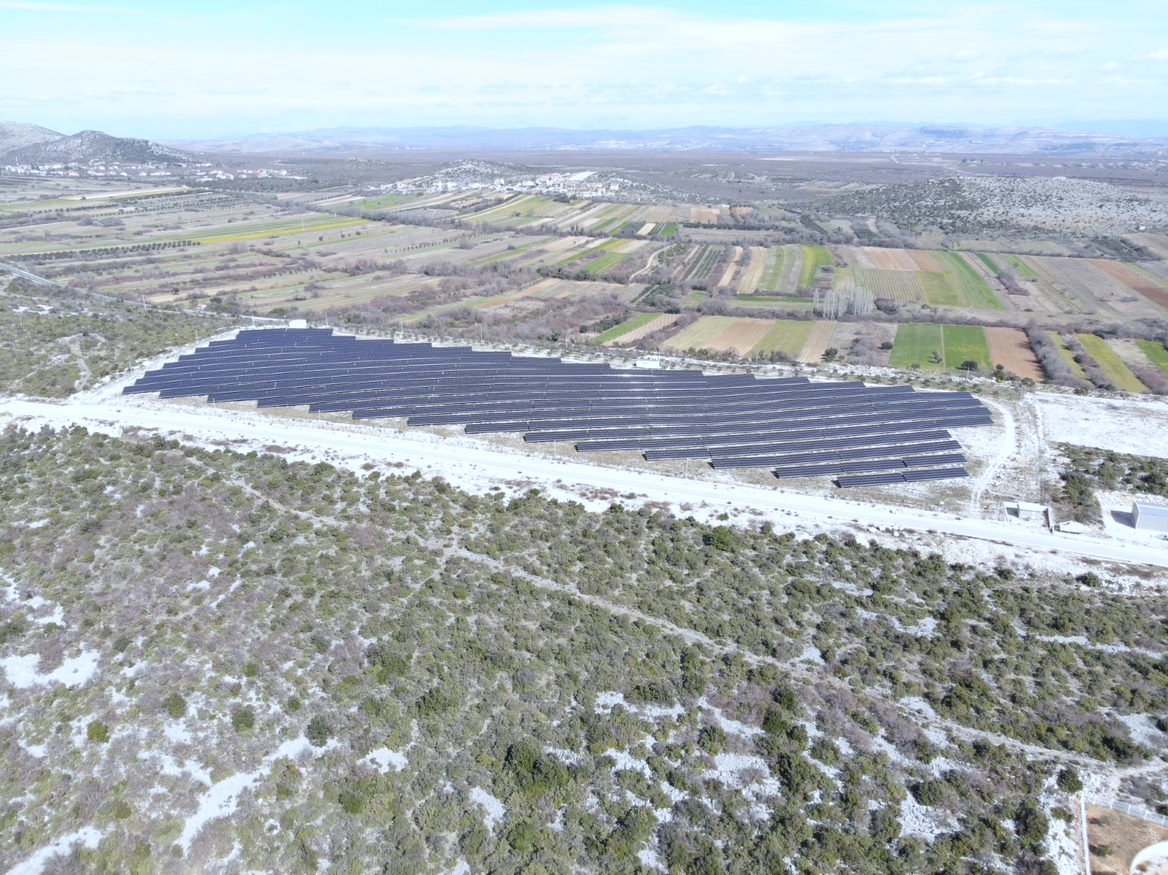Low-carbon investment funding: Split and Dalmatia
- The Split-Dalmatia county is the largest Croatian county, geographically located in the southern part of Croatia and the central part of the Adriatic coast. The population of Split-Dalmatia county is 454.798 inhabitants. According to the 2011 Census of Population, 77% of the total population lives in 16 county’s cities, while the other 23% are settled in 39 county’s municipalities. In the County capital Split lives 39,16% of the county’s population.
In terms of regional supply mix, electricity is generated by renewable energy sources solely, respectively hydro, wind and solar photovoltaic. The electrical energy generated per year is ~80% from hydro, ~18% from wind and ~2% from solar photovoltaic power plants. The total installed capacity of hydro power plants in Split-Dalmatia is 919 MW and is based on the hydropower system of the river Cetina. Concerning self-supply of electricity, the installed capacities in Split-Dalmatia county are producing almost double in relation to the actual electricity demand (generated capacity of 3014 GWh/a). Moreover, due to the absence of district heating plants, electrical energy is used for heating purposes.
ERDF resources
For the period 2014-2020, Croatia has been allocated 8,61 billion € for cohesion policy and 2 billion € for the development of the agricultural sector and rural areas. Energy efficiency and renewable energies are the backbone of EU 2020 strategies and a key area through which the EU will meet its GHG emission reduction targets by 2020, 2030 and 2050. That is why thematic objective number 4 of the European Cohesion Policy is "Supporting the transition towards an economy based on low CO2 emissions in all sectors" and financial support for energy efficiency and renewable energy projects in the Republic of Croatia is provided through Thematic objective 4 of the Partnership Agreement “low carbon economy in all sectors". For this purpose, 532 million € were provided from the European Regional Development Fund under the Operative Programme for Competitiveness and Cohesion, 216 million € from the European Agricultural Fund for Rural Development and 8 million € from the European Maritime and Fisheries Fund.
Since Split-Dalmatia County is a NUTS3 region, there are no decentralised regional operative programmes made available from ESI funds through the Partnership Agreement. However, the region as the rest of Croatia does focus on energy efficiency and renewable energy in public infrastructure and residential buildings. Interventions were planned in sectors with the highest share of energy consumption:
- private sector (buildings and manufacturing processes)
- public and residential buildings and public energy infrastructure (centralized heat system and public lighting)
- introduction of new technologies in energy management (smart networks).
- Split-Dalmatia county low-carbon initiatives
Despite the absence of decentralizes ESI funds made available through the partnership agreement, the County is implementing a Programme for Systematic Energy Management with the aim to increase energy efficiency and the use of RES through its territory since 2014. The Programme has been implemented in two stages: the first phase from 2014 to 2017 and the second from 2018 till 2021, each of them regulated through ordinances and financed through the County’s budget.
The Split-Dalmatia Programme for County Systematic Energy Management (2014-2017) was introduced to increase energy efficiency in its entire area and consequently to reduce CO2 emissions. The program has been implemented through the following projects:
- Project 1: Encouraging the installation of solar systems for the preparation of domestic hot water and domestic heating
- Project 2: Promoting energy efficiency in buildings
- Project 3: Encouraging the installation of PV power plants in households for self-consumption purposes with installed power up to 10 kW (out of the incentivised system)
- Project 4: Encouraging reduction of energy consumption and light pollution of public lighting.
Other EU low carbon initiatives
Based on publicly available data on NUTS3 region (HR035: Split-Dalmatia County) provided via link, Split-Dalmatia has 28 participations in Horizon 2020 projects with 3,48 million € of EU contribution and a total of 25 H2020 signed grants.
Transnational cooperation programmes are also actively used by various partners across Split-Dalmatia County where in the period 2014-2020, 22 projects and 27 partnerships with a total budget of 45,6 million € were funded under the thematic objective 4 “Supporting the shift towards a low-carbon economy in all sectors”.
Three European Local Energy Assistance (ELENA) projects are implemented in Croatia but only the one related to energy efficiency and RES in buildings and street lighting - where the beneficiary is the Croatian Bank for Reconstruction and Development - can be applicable at the regional level.
The European Bank for Reconstruction and Development (EBRD) launched in May 2016 a 60 million € investment project for financing of energy efficiency improvements in Croatian homes and households through the commercial bank. The REENOVA+ is a credit line facility, which is financing residential borrowers seeking to invest in the reduction of home energy bills. The facility finances, among others, the installation of energy efficient windows, the insulation of walls, roofs and floors and the introduction of efficient boilers, solar water systems, heat pumps or home appliances.
Private Finance for Energy Efficiency (PF4EE) instrument is a joint agreement between the EIB and the European Commission which aims to address the limited access to adequate and affordable commercial financing for energy efficiency investments.
Go back to the list of all the regional reports.

